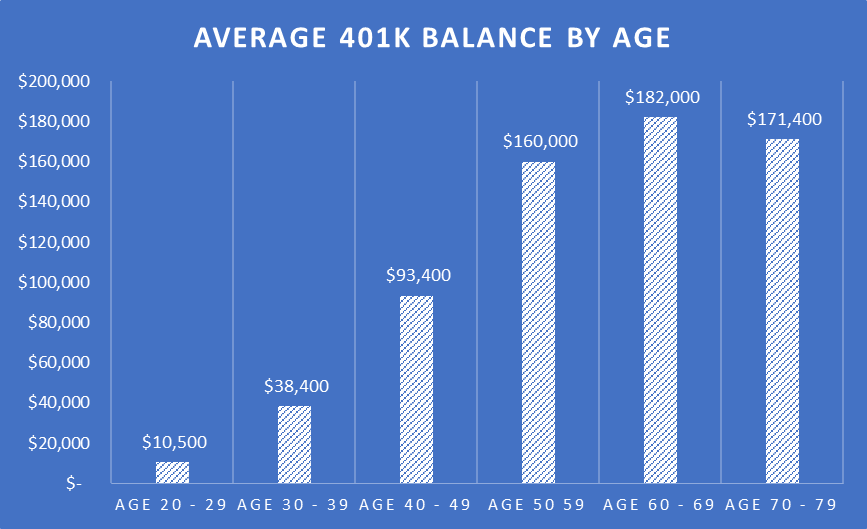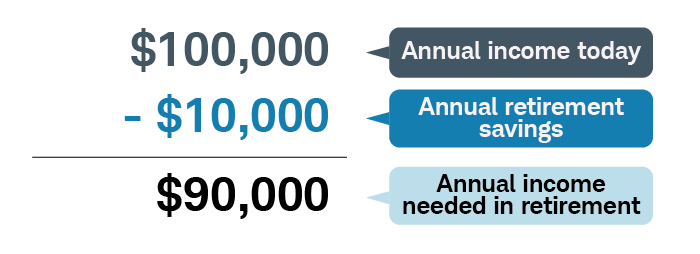
RetirementGuide.com is an online wealth and health publication. It aims at providing accurate information about retirement topics. It has a strict editorial process. This includes fact-checking. attribution to reliable source, original reporting by experienced journalist, and input from financial or insurance experts. It also ensures that current information is accurate.
Step-by step guide to retirement planning
A Step-by-step guide to retirement planning is a practical guide to preparing for your future. It is action-oriented and offers calculators as well as expert advice to help you achieve your goals. Planning for retirement starts with determining how much you need to retire. The next step is to estimate the monthly expenses.
We have resources for you
It is important to know the resources that are available to help you when you approach retirement. There are many resources available to help you plan for retirement. AARP is just one example. Some of these organizations offer tools to help prepare for retirement like the Retirement Ready assessment.

Social Security calculation
You will need to budget for your Social Security calculations when you retire. It can be challenging to calculate your benefits. Understanding how benefits are calculated can help you plan your retirement and increase your benefit payments. The following key factors determine how Social Security benefits are calculated.
IRAs
IRAs are a great way to save tax-efficiently for retirement. This strategy is best for those without a pension, but with enough money saved in other accounts. It can also delay Social Security's start until 70. Investing in an IRA in Step 2 of the Order of Operations to Fund Retirement is.
Options for retirement payout
Retirees have several options and each has its own pros, cons. The three primary options are a lump sum, lifetime annuity, and refunding the entire account. The first involves managing investments while the latter is free of tax.
Faculty can receive retirement payments on the dates they choose
Knowing when you will receive your pension benefits is the most important thing. Many faculty members receive their pension benefits on the last day of the month, while others are paid every other month. For retirees who choose direct deposit, payments are usually received in their accounts by nine a.m. on the last business day of the month. Direct deposit information can be rejected or not received. However, you will still receive the paper check. If you aren't sure when your next check is due, contact the appropriate retirement offices.

Retirement payout options for MPSERS members
You are a member of the Michigan Public School Employees Pension System (MPSERS) when you teach in Michigan. Established in 1945, the system is home to over 187,000 retired people and received $3.5 billion in pensions in 2010. Most teachers are automatically enrolled under the Defined Contribution plan (DC), however, people who still work in the state may choose to opt for the Pension Plus 2 plan (PP2) which combines the best of both a DC or DB pension plan.
FAQ
What Are Some Of The Different Types Of Investments That Can Be Used To Build Wealth?
There are many investments available for wealth building. These are just a few examples.
-
Stocks & Bonds
-
Mutual Funds
-
Real Estate
-
Gold
-
Other Assets
Each has its own advantages and disadvantages. Stocks and bonds are easier to manage and understand. However, they tend to fluctuate in value over time and require active management. Real estate on the other side tends to keep its value higher than other assets, such as gold and mutual fund.
It comes down to choosing something that is right for you. It is important to determine your risk tolerance, your income requirements, as well as your investment objectives.
Once you have made your decision on the type of asset that you wish to invest in, it is time to talk to a wealth management professional or financial planner to help you choose the right one.
Who can help with my retirement planning
Many people find retirement planning a daunting financial task. It's not just about saving for yourself but also ensuring you have enough money to support yourself and your family throughout your life.
Remember that there are several ways to calculate the amount you should save depending on where you are at in life.
If you're married, you should consider any savings that you have together, and make sure you also take care of your personal spending. Singles may find it helpful to consider how much money you would like to spend each month on yourself and then use that figure to determine how much to save.
If you are working and wish to save now, you can set up a regular monthly pension contribution. If you are looking for long-term growth, consider investing in shares or any other investments.
Talk to a financial advisor, wealth manager or wealth manager to learn more about these options.
What is retirement planning?
Financial planning includes retirement planning. It helps you plan for the future, and allows you to enjoy retirement comfortably.
Retirement planning means looking at all the options that are available to you. These include saving money for retirement, investing stocks and bonds and using life insurance.
Statistics
- According to a 2017 study, the average rate of return for real estate over a roughly 150-year period was around eight percent. (fortunebuilders.com)
- A recent survey of financial advisors finds the median advisory fee (up to $1 million AUM) is just around 1%.1 (investopedia.com)
- These rates generally reside somewhere around 1% of AUM annually, though rates usually drop as you invest more with the firm. (yahoo.com)
- Newer, fully-automated Roboadvisor platforms intended as wealth management tools for ordinary individuals often charge far less than 1% per year of AUM and come with low minimum account balances to get started. (investopedia.com)
External Links
How To
How to Invest your Savings to Make Money
You can make a profit by investing your savings in various investments, including stock market, mutual funds bonds, bonds and real estate. This is what we call investing. You should understand that investing does NOT guarantee a profit, but increases your chances to earn profits. There are many different ways to invest savings. These include stocks, mutual fund, gold, commodities, realestate, bonds, stocks, and ETFs (Exchange Traded Funds). We will discuss these methods below.
Stock Market
The stock market is one of the most popular ways to invest your savings because it allows you to buy shares of companies whose products and services you would otherwise purchase. The stock market also provides diversification, which can help protect you against financial loss. If oil prices drop dramatically, for example, you can either sell your shares or buy shares in another company.
Mutual Fund
A mutual funds is a fund that combines money from several individuals or institutions and invests in securities. These mutual funds are professionally managed pools that contain equity, debt, and hybrid securities. Its board of directors usually determines the investment objectives of a mutual fund.
Gold
The long-term value of gold has been demonstrated to be stable and it is often considered an economic safety net during times of uncertainty. It is also used as a form of currency in some countries. Due to the increased demand from investors for protection against inflation, gold prices rose significantly over the past few years. The supply and demand factors determine how much gold is worth.
Real Estate
The land and buildings that make up real estate are called "real estate". You own all rights and property when you purchase real estate. For additional income, you can rent out a portion of your home. You may use the home as collateral for loans. The home may also be used to obtain tax benefits. Before buying any type property, it is important to consider the following things: location, condition and age.
Commodity
Commodities refer to raw materials like metals and grains as well as agricultural products. These commodities are worth more than commodity-related investments. Investors who want the opportunity to profit from this trend should learn how to analyze charts, graphs, identify trends, determine the best entry points for their portfolios, and to interpret charts and graphs.
Bonds
BONDS can be used to make loans to corporations or governments. A bond is a loan that both parties agree to repay at a specified date. In exchange for interest payments, the principal is paid back. As interest rates fall, bond prices increase and vice versa. An investor purchases a bond to earn income while the borrower pays back the principal.
Stocks
STOCKS INVOLVE SHARES of ownership within a corporation. Shares are a fraction of ownership in a company. If you have 100 shares of XYZ Corp. you are a shareholder and can vote on company matters. You will also receive dividends if the company makes profit. Dividends refer to cash distributions made to shareholders.
ETFs
An Exchange Traded Fund is a security that tracks an indice of stocks, bonds or currencies. ETFs are traded on public exchanges like traditional mutual funds. For example, the iShares Core S&P 500 ETF (NYSEARCA: SPY) is designed to track the performance of the Standard & Poor's 500 Index. This means that if SPY is purchased, your portfolio will reflect the S&P 500 performance.
Venture Capital
Venture capital refers to private funding venture capitalists offer entrepreneurs to help start new businesses. Venture capitalists provide financing to startups with little or no revenue and a high risk of failure. They invest in early stage companies, such those just starting out, and are often very profitable.